Sidebar
Forgotten Weapons

cross-posted from: https://lemmy.world/post/19780540 > https://www.rockislandauction.com/detail/62/1323/rare-and-unique-30shot-revolver
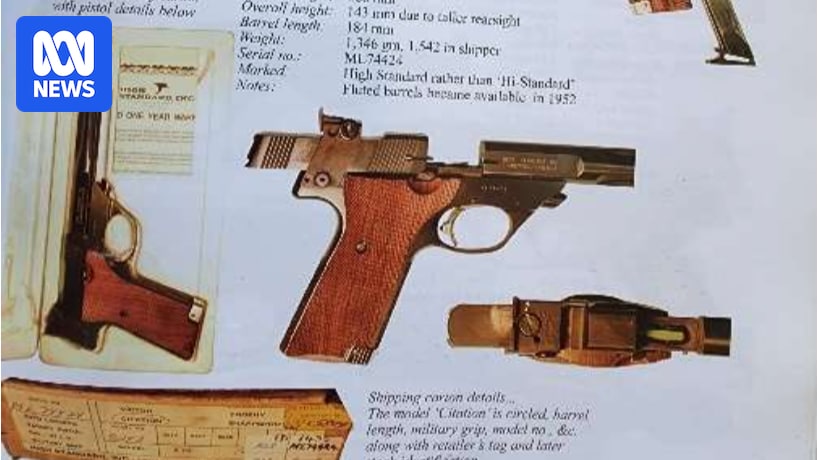 www.abc.net.au
www.abc.net.au
>... Lithgow Small Arms Factory Museum on August 25 after three people wearing balaclavas allegedly stole 27 handguns worth an estimated $200,000.

cross-posted from: https://lemmy.world/post/19343315 > https://www.christies.com/lot/a-fine-german-slurbow-dated-1657-5509843/ > > https://www.christies.com/en/lot/lot-5509842

cross-posted from: https://lemmy.world/post/19320343 > 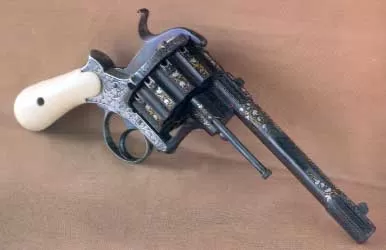 > > https://www.limaeasy.com/lima-guide/lima-culture-guide/museums-lima/gold-of-peru-weapons-of-the-world-museum

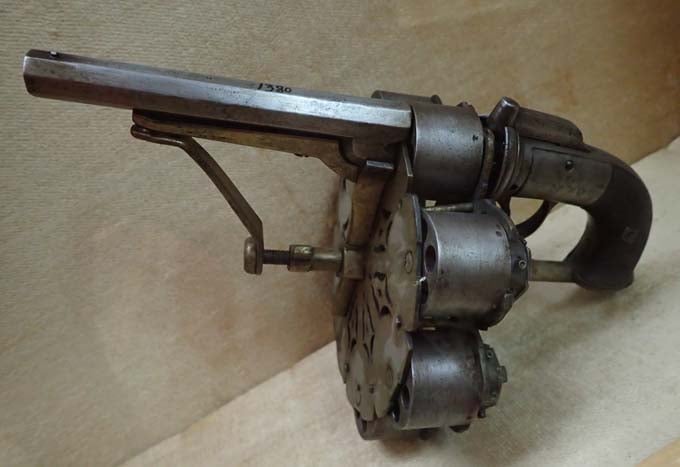  https://firearmshistory.blogspot.com/2014/03/the-enouy-revolver.html

This 5 shot 7.62 caliber double action revolver is actually suppressed by its unique cartridge design. 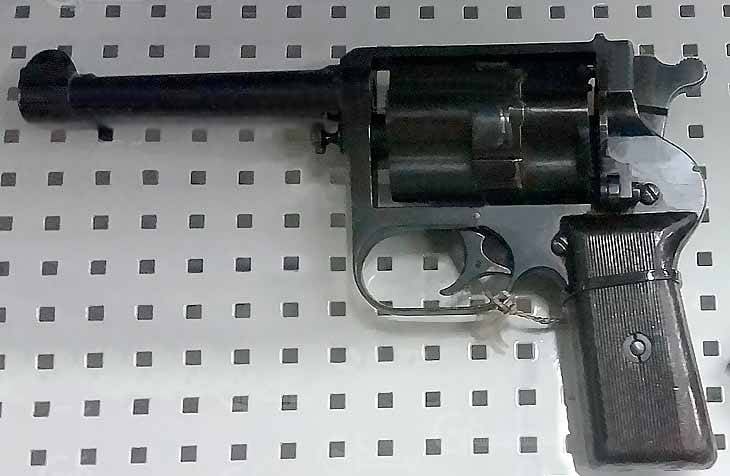 When fired expanding gases from the gunpowder pushed a plug forward which inturn pushed the liquid solution (60% alcohol 40% glycerol). This incompressible solution pushed on the bullet to launch it out of the revolver's barrel. The gases were contained in the cartridge preventing the typical sound report of a gunshot. And the liquid would follow the subsonic bullet out of the barrel as well. https://guns.fandom.com/wiki/Gurevich_silent_revolver

This Chinese production C96 Broomhandle pistol is found in the collection of the UK's Royal Armouries. Curator Jonathan Ferguson showed it off recently in [this video](https://youtu.be/Rmue3jeYLCc) briefly. It notably the word pistol engraved on the side where it should say Mauser. Just in case you couldn't tell I suppose.

https://armyrecognition.com/news/army-news/army-news-2024/benelli-introduce-new-rifle-as-solution-against-uav-during-battle While it seems to lack any really novel new features it definitely is interesting seeing major manufacturers pivoting with FPV drones taking over the modern battlefield.

>The first repeating rifle used in combat by a military force was a flintlock system developed by the Kalthoff brothers. It was adopted in the 1640s by the Danish Royal Guard, who purchased a bit more than 100 of the guns, and used them successfully in the Siege of Copenhagen in 1659. The Kalthoff is a .54 caliber flintlock rifle with a magazine of 30 balls under the barrel and a powder storage compartment in the buttstock. A lever under the action is rotated forward 180 degrees and then back to completely reload the rifle – this action loads a ball into the chamber, seats it fully in place, loads powder behind it, primes the pan, cocks the hammer, and closes the frizzen. This was an amazing amount of firepower in the mid-1600s, and the mechanism in the gun is brilliant. >The Kalthoff brothers (Peter, Mathias, Caspar, Henrik, and William) spread out across Europe working for many royal courts although it was in Denmark where their gun saw the most substantial military use. The system would lead to other repeating flintlock designs like the Lorenzoni, but these did not really meet the quality of the original Kalthoffs (in my opinion). However, the system was very expensive to make and rather fragile to use. By 1696 the Danes had taken them out of service in favor of simpler and more durable designs. https://youtu.be/ghKrbNpqQoY

cross-posted from: https://lemmy.world/post/18634443 > 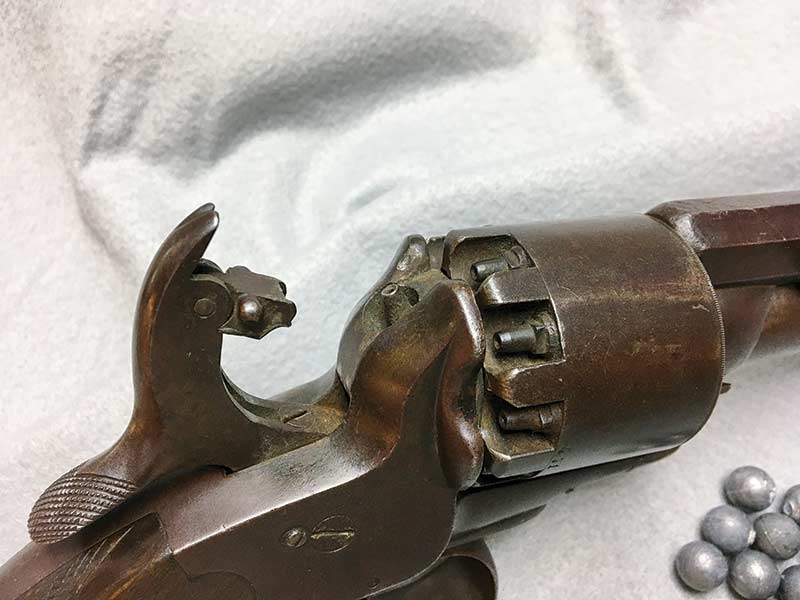 > > 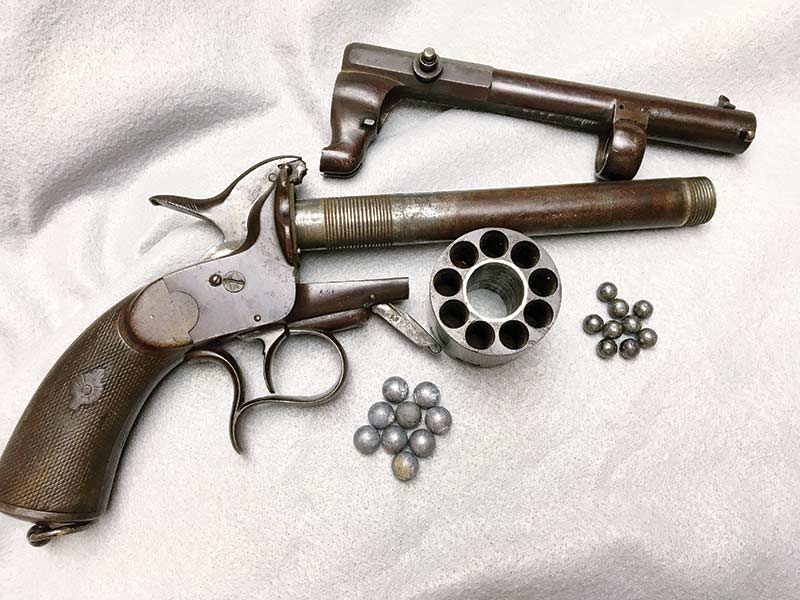 > > https://gunsmagazine.com/guns/the-lemats-grapeshot-revolver/
[Alternative Youtube Link](https://www.youtube.com/watch?v=VMXKXoA1_gQ)

[Source](https://wallacelive.wallacecollection.org:443/eMP/eMuseumPlus?service=ExternalInterface&module=collection&objectId=61724&viewType=detailView)

>The UG-02 can move in two-axis. Side to side and up and down. The remote-controlled head has clamps to securely lock down a standard AR. Aiming for the turret is accomplished by live-streaming video from a camera mounted behind the optic of the firearm. To remotely fire the weapon mounted to the UG-02, there is a pin on a solenoid that is pulled into the trigger when activated. To power the whole turret a 12V power source is needed. I used a 10Ah battery for just a couple hours without issue. Article on the device: https://www.gunsamerica.com/digest/remote-controlled-gun-turrets-meet-the-morpower-ug-02/

cross-posted from: https://lemmy.world/post/17950172

cross-posted from: https://lemmy.world/post/17952023 > https://www.thefirearmblog.com/blog/2011/07/05/key-guns/

cross-posted from: https://lemmy.world/post/17827857

Simo Häyhä is a legendary sniper, and his preference for using irons over the provided scope of his time is often cited to bolster anti-optic opinions. [Coming across a website that had already put together an article](https://www.jaegerplatoon.net/RIFLES7.htm), I wanted to look at the scope that would have been his alternative to iron sights to give some additional perspective to why he chose not to use it. 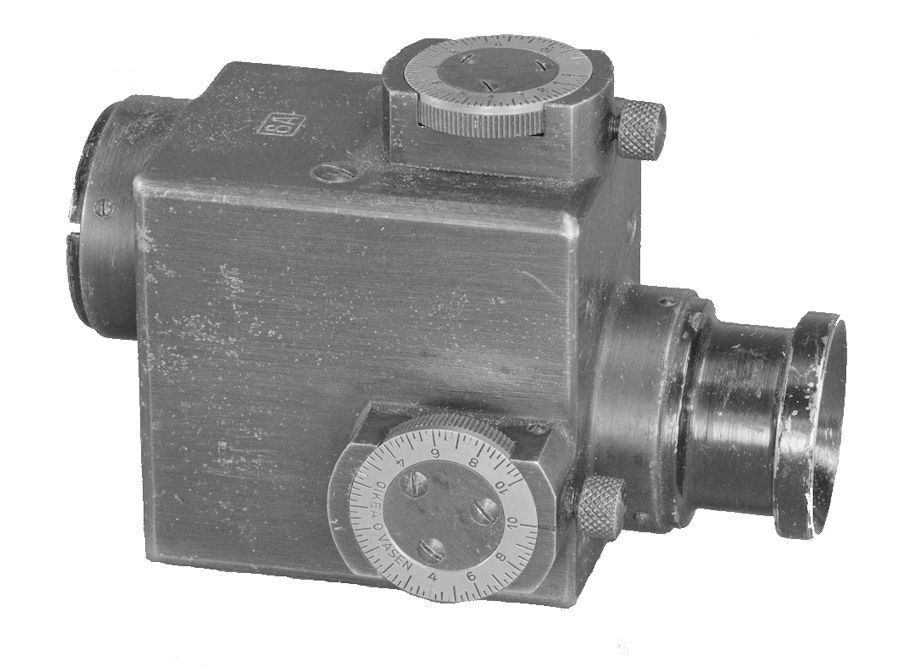 >As noted the process of developing a sniper rifle for Finnish Army had stopped in year 1931. While the process had been stopped to wait for M/27 rifle to enter production, it still took several years after that until the sniper rifle project was re-introduced. Finnish Army restarted its testing of scoped rifles in year 1935, but somehow then ended up doing the development in totally backward way. Selecting existing rifle scope and purchasing it or even using existing scope and developing new scope from it would have made sense, but that is not how the project was done. Instead Finnish military decided that it wanted universal optical sight that could be used in several kinds of weapons (rifles, machineguns etc...) and gave only some instructions and the drawings of outer measurements to domestic optics manufacturer Oy Physica Ab, which designed the scope. While this made sense in some ways, it seems that common wisdom such as "form follows function" and "jack of all trades - master of none" had been completely forgotten in the matter. >The resulting 3x24 prismatic Physica-scope named after its manufacturer was just about as bad as it could get. The basic design was quite suitable to be used in machineguns, but horribly poor for sniper rifle. Physica-scope was box-shaped, weight about 800 grams, and designing a decent rifle mounting for installing it to M/27 rifle was a nightmare. Mounts setting Physica scope on top of the receiver were tested, but they set the scope so high that shooter had to raise his head unnaturally high, which pretty much ruined shooting stance and made getting proper cheek weld impossible. So the scope was installed off-set to to left side of the rifle. As the Physica scope had to installed to left side of the rifle the rifle butt needed be equipped with large cheek rest (it seems that all M/33 sniper rifles were not equipped with these). As if there would not have been problems enough Physica prismatic scope had also quite short (40 mm) eye relief, which easily resulted Physica scope of recoiling rifle hitting to brow of the shooter. Admitted attacking rifle scope on this manner did provide one minor benefit - since the scope was on left side of the receiver the rifle could be loaded with normal five round stripper clips. Also, unlike most period military rifle scopes, reticle used in Physica scope actually had etched markings for making quick range estimations and for making speed estimations for moving target. While somewhat crowded, the reticle could have been a success in some rifle scope of better design. Nevertheless the problems, once started, the project went ahead. By December of 1937 designing of both the scope and mount had been completed and Finnish Army Ordnance Department ordered 250 Physica scopes from Oy Physica Ab. From the 250 Physica scopes ordered 150 were intended as rifle scopes while 100 were reserved for Maxim M/32-33 machineguns (but later ended up also being used in M/39 PH sniper rifles). Production of scopes was slow to start and Leonard Lindelöf's machine factory proved equally slow in manufacturing scope mounts. Finnish snipers received only handful of these sniper rifles during Winter War. Most of M/27 infantry rifles selected to become M/27 PH sniper rifles had Tikkakoski-made rifle barrel with serial number over 80000. These sniper rifles were assembled by Finnish Army Weapons Depots. One could note that Physica scope may have been at least partly inspired by American Warner-Swasey prismatic sight, which US snipers had used during World War 1, although US military had found Warney-Swasey insatisfactory already back then. >When Winter War started in 30th of November 1939 only 84 of the ordered 250 Physica scopes had been manufactured and none had been yet installed to rifles. Production of scope mounts demanded extreme precision and was so slow that only few prototypes of new M/37 sniper rifle were made in time to be used in Winter War. Whole production run of 150 M/37 sniper rifles (infantry rifle M/27 with precision trigger mechanism and Physica scope) was completed by June of 1940. During Continuation War Physica scopes were often moved to new M/39 rifles. While originally referred as sniper rifle M/37, the older version Physica-scoped rifle rifle build on (infantry rifle M/27 was named as Sniper rifle M/27 PH during Continuation War. In addition of earlier listed problems the wartime use revealed that Physica rifle scopes and fogging issues and were more complicated to maintain than captured Soviet rifle scopes. Number of m/27 PH sniper rifles were decreasing fast already during the war and in year 1951 only 24 of them remained in inventory. The last of these rifles remained stored until 1970's.

https://drouot.com/es/l/16250395-an-outstanding-percussion-revo?actionParam=recherche&controllerParam=lot&fromId=&query=marc
Staking a claim on a parcel near 500, 375 for anyone interested in contributing.

cross-posted from: https://lemmy.world/post/17529171

https://www.guns.com/news/2012/09/05/luger-night-pistol-with-brass-tactical-light 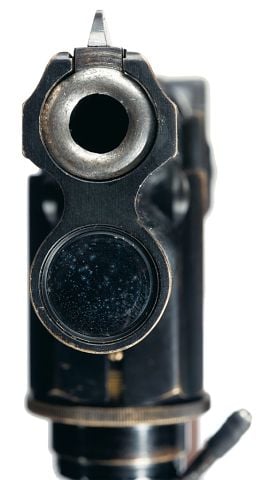 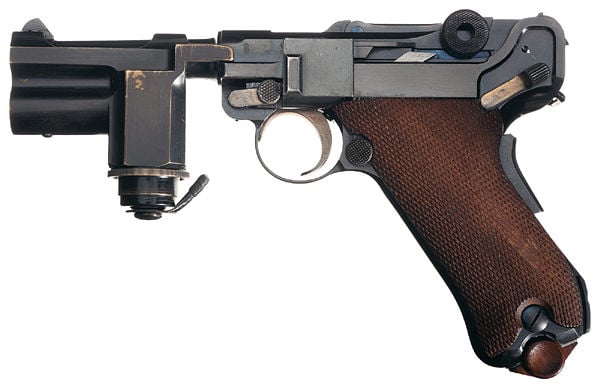

This .38 caliber glove was designed by Stanley M. Haight and manufactured by Sedgley Co. of Philadelphia. 52-200 copies of this single shot break barrel smooth bore design. >It was meant as a covert operation and assassination weapon in the Pacific Theater. It was mounted on the back of a cowhide glove; a long-sleeved coat would usually be worn to hide the weapon.

cross-posted from: https://lemmy.world/post/17358656 Ian's video: [8:47] https://youtu.be/6FIi8Wge9pI
>Today we are taking a look at the backstory of the famously recognizable Krummlauf device, the curved barrel attachment for the StG-44. It is really a perfect example of how German late-war desperation weapons took shape. It went from an idea nobody actually wanted to an impossible development program in the chaos of the German defeat.

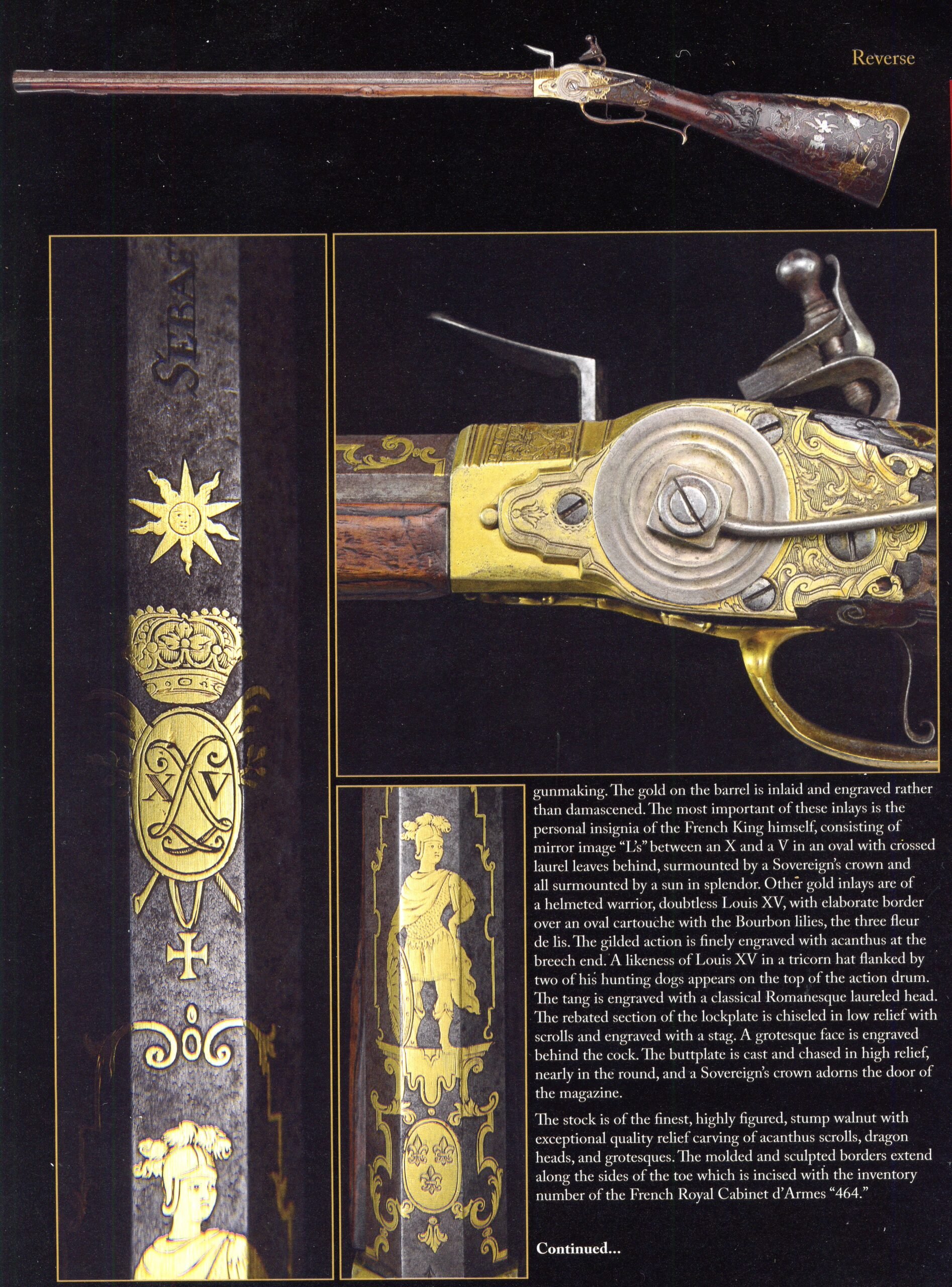  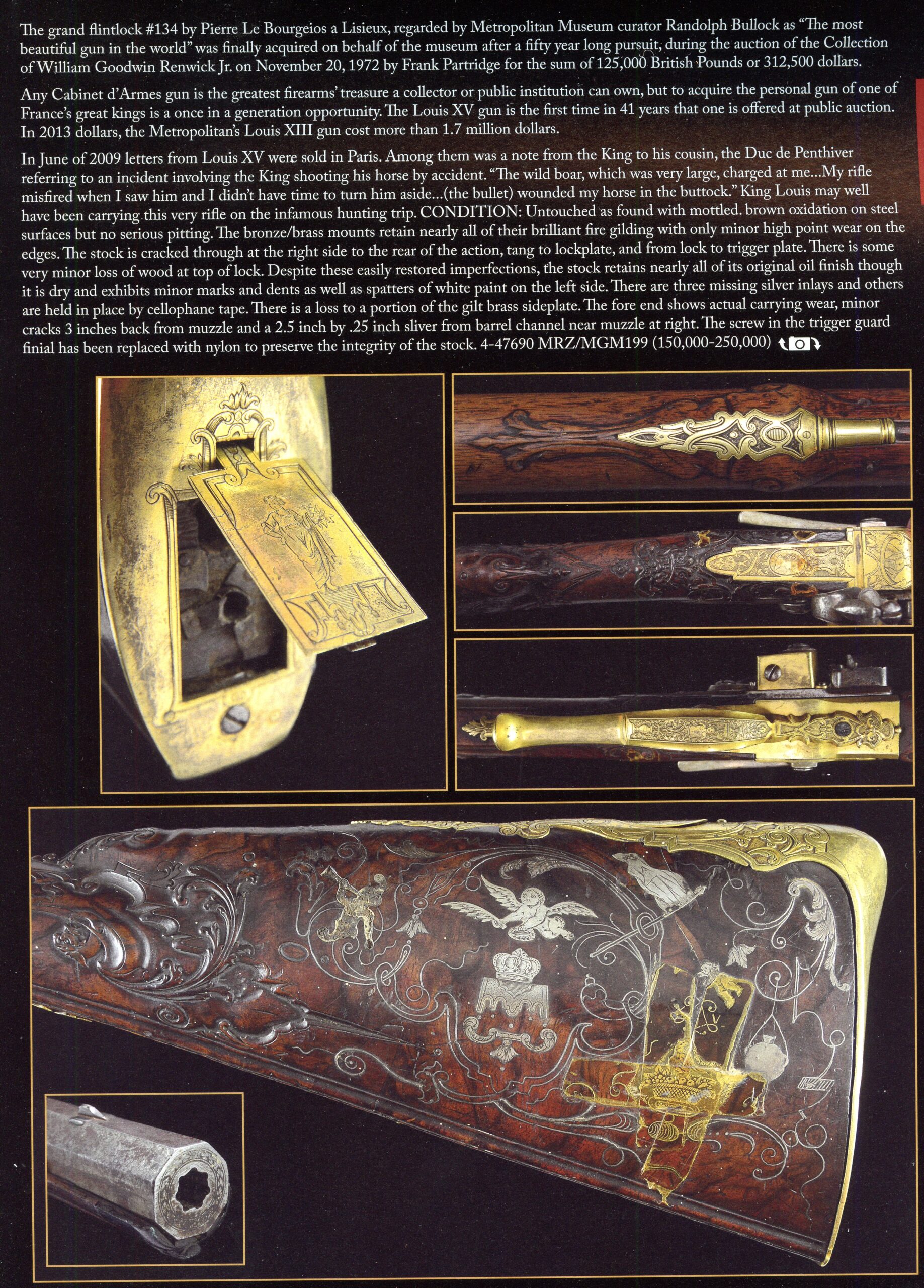 https://www.germanhuntingguns.com/the-lorenzoni-flintlock-repeating-rifle/

https://www.collectorebooks.com/gregg01/Lot-106.htm I wouldn't advise putting your mouth on it, though

These bullets were made to hide their carbide rear end inside the cartridge. They were designed to be given to the Afghans during the Soviet invasion to create barrel obstructions in enemy rifles. Heard about them from this video (6:34). There doesn't seem to be much in terms of English language sources, from my brief searching, so if anyone finds more info please share. https://youtu.be/Nwleh3lYjqI

>...the 6-pounder weapon capable of firing a devastating round of chain-shot—two cannonballs connected by a length of chain. The idea was both barrels would fire simultaneously, sending the chain-shot hurtling among enemy combatants. Unfortunately, the first field test of the prototype proved a disaster. The barrels did not fire at exactly the same time, causing the chain-shot to fly wildly off target or the chain to break.




